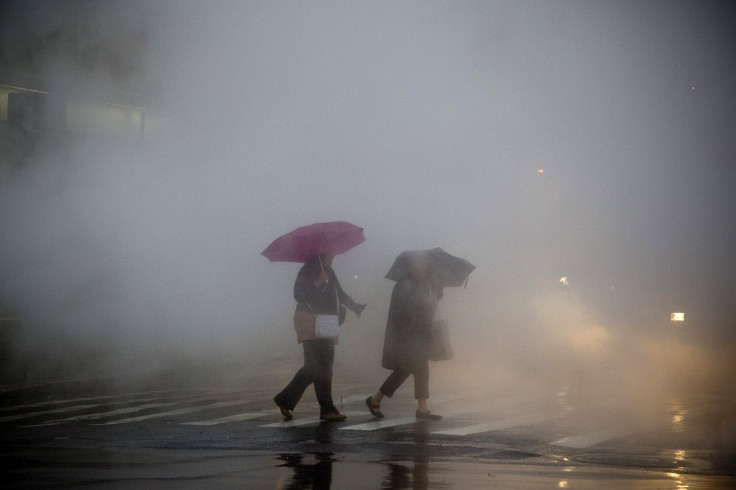What is A Derecho Storm? 10 US States To Experience 58 MPH Winds, Power Outages, Tornadoes This Week

A rare weather phenomenon called "derecho,” an event in which a long-lived severe line of thunderstorms creates wind gusts up to 58 mph reaching as far as 240 miles at a time, is forecast to hit at least 10 states across the U.S. as early as Wednesday.
According to a report from Weather.com, damaging winds, large hail, tornadoes and flooding are possibilities for all 10 states. Areas of eastern Iowa, northern and central Illinois, south Wisconsin, Indiana, southern and lower Michigan, and Ohio are all expected to experience the storm starting in the afternoon hours on Wednesday.
Three cities, including Pittsburgh, Pa., and Cincinnati and Columbus, Ohio, are forecast to get hit by the potential derecho starting as early as Wednesday evening. East Coast residents will feel the wrath of the storm beginning Thursday, and Philadelphia, Pa., Baltimore, Md., and Washington, D.C., are all cities reportedly in the storm's path and could be hit with large hail and tornadoes. Other East Coast cities, including New York and Boston, are expected to experience heavy rainfall and consequential flooding through Friday.
Weather.com meteorologist Nick Wiltgen confirmed one or more derecho storms is a strong possibility, stating “conditions are favorable” for the rare weather occurence to make an appearance. “We can’t say for sure whether one is going to develop until it actually starts to close in, but the conditions are favorable for it, and people need to pay attention to the forecast,” said Wiltgen.
The last storm classified as a derecho whipped through the Midwest and East Coast on June 29, 2012, resulting in 22 deaths and more than 1 million Americans living for up to one week without power. Wiltgen said if the potential storms’ aftermath leaves residents without power, the effects will not be as devastating as they were last year.
“Unlike last year’s derecho ... even if there is a nasty derecho, the weather after will be much cooler,” Wiltgen said, confirming temperatures are expected to only reach a maximum of 70 degrees, a positive for those expected to lose power due to the storm. “Folks will be a lot more comfortable without power than they were last year."
© Copyright IBTimes 2024. All rights reserved.






















